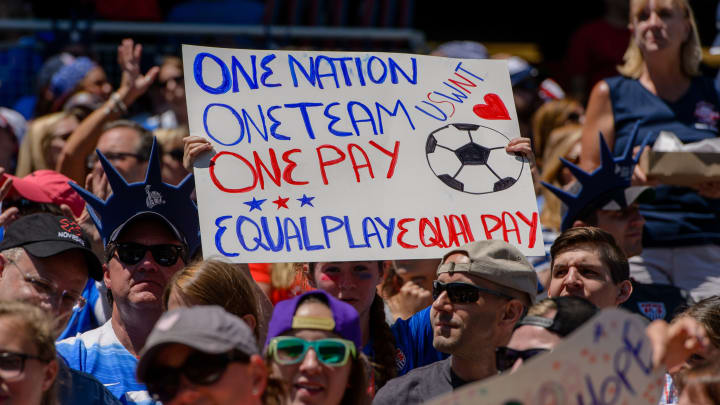USWNT, U.S. Soccer Both Have Incentive to Settle Dispute Outside of Court

In the wake of winning World Cup 2019, the U.S. women’s national team and U.S. Soccer will soon begin a mediation process to try to resolve the WNT players’ gender discrimination lawsuit without going to court. There are reasons for both sides to want to reach a settlement through mediation.
U.S. Soccer would like to avoid the discovery process that a court case would bring, which would presumably reveal a number of things the federation would prefer weren’t public. (For example, we still don’t know how much money MLS gets compared to U.S. Soccer from their TV rights, which are bundled together with WNT and MNT games.) And the USWNT players, for their part, would risk losing in a court case, which would be much less likely to be influenced by public opinion (which is clearly on the WNT players’ side right now amid a national discussion over equal pay).
But until the start of that mediation—which is supposed to be completely private—both sides are engaging in public posturing to try to win over adherents. This week included U.S. Soccer’s release on Monday of a letter from president Carlos Cordeiro that claimed to use data going back to 2010 to show that U.S. Soccer had paid USWNT players more in salaries and bonuses ($34.1 million) than USMNT players ($26.4 million).
U.S. Soccer did acknowledge that the numbers were different once you took into account FIFA World Cup prize money, which is much higher for the men than for the women; including those numbers, the USMNT earned $41.0 million vs. the USWNT’s $39.7 million in that period.
The federation said its data were independently audited, while a spokesperson for the USWNT players said the numbers were “utterly false which, among other things, inappropriately include the NWSL salaries of the players to inflate the women’s players compensation. Any apples to apples comparison shows that the men earn far more than the women.”
Then on Tuesday, the U.S. men’s national team players union chimed in with a statement of full support for the WNT players, lambasting Cordeiro’s letter and saying: “The women's national team players deserve equal pay and are right to pursue a legal remedy from the courts or Congress.”
One intriguing omission from Cordeiro’s letter was the failure to mention that USWNT games are part of the sponsorship and TV rights package connected to Soccer United Marketing, which is owned by the MLS owners and profits extensively from the deal. (The TV rights of the USWNT, USMNT and MLS have been bundled together as an aid to MLS, an arrangement that has not included the NWSL TV rights.) Long story short: The success of the USWNT brings money to SUM, which helps pay the salaries of several USMNT players in MLS.
At this point, U.S. Soccer and the WNT players don’t even agree on basic facts. According to the WNT spokesperson, “the women’s team requested the same compensation structure as the men have, so they would be paid equally for equal performance. USSF refused.” But U.S. Soccer says the WNT never requested the same pay structure as the MNT has.
The rancor on both sides this week is enough to make you wonder if they’ll actually be willing to reach an accord through mediation. But sometimes agreements can come just after the public arguments seem to be the loudest. Which brings us back to where we started: Both sides have incentives to solve their issues through mediation and avoid a court case. It says here that that’s exactly what will happen.
